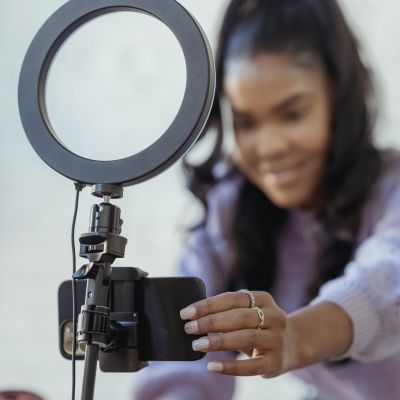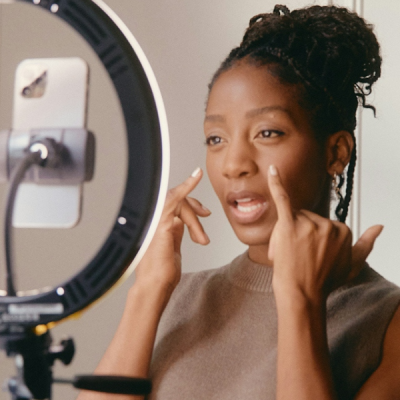- Latam Intersect PR’s new report, ‘2025: The Future of Social Media Consumption in Latin America’ found that social media platforms maintain a powerful hold across countries and demographics in Latin America, with each one offering brands a unique audience.
- Overall, Instagram is the most popular platform in Argentina, Brazil, and Chile, while Facebook is still the favourite in Colombia, Mexico and Peru.
Brands reviewing their social media marketing strategies for the new year might want to take a look at the latest report from Latam Intersect PR (LIPR), which predicts that ‘platform magnetism & pluralism’ will be one of three key trends set to impact Latin American online consumption in 2025.
“The trend of platform magnetism and pluralism ties in neatly with something we’re always saying at the agency, that Latin America cannot be approached with a one-size-fits-all strategy,” Livia Gammardella, head of marketing and digital at LIPR, explains. “Our report — based on our own survey — has helped us discover exactly who is using which platforms and for what purposes, alongside other invaluable insights that can help brands connect more effectively with consumers in 2025.”
LIPR’s new report, ‘2025: The Future of Social Media Consumption in Latin America’, developed by Intersect Intelligence, is based on findings from a 2024 survey of 1800 respondents from Argentina, Brazil, Chile, Colombia, Mexico, Peru.
When asked about their most-used social media platform, 26.4% of the youngest users (16–24 years old) favored TikTok, although Instagram remains more popular at 36.3%. Among young adults (25–37 years old), 44.2% chose Instagram, while 29.8% still prefer Facebook. For older generations (aged 38 and over), Facebook dominates, with 47.3% naming it their platform of choice.
While less dominant than major social networks, LIPR’s report also highlights platforms with unique, cross-generational appeal. For instance, 16% of respondents prefer YouTube, making it the third most popular platform after Facebook and Instagram. Notably, YouTube shows minimal variation in preference across age groups.
LIPR’s report found that Latin Americans are extremely loyal to the social media platforms they have become accustomed to, but they are also willing to go to different platforms for different needs. For instance, Pinterest, though rarely a first-choice platform, accounted for 16.9% of third, fourth, and fifth choices among consumers ‘researching in-depth about a product before buying it’.
“The abiding message is that the diverse populations that exist both within the continent and individual countries and regions – be they demographic, generational, or income-related – will adopt the platforms that are most easily accessible and make the most sense for their own reality,” adds Gammardella.
One network that was almost nowhere to be found in the LIPR survey was Threads, which only registered with 0.3% of Peruvian respondents who said it’s the social media platform they ‘use the most’ (it scores 0% among all other nationalities).
“We’re watching Bluesky closely for next year, but as Threads has shown, jumping on trends for relevance can risk compromising a brand’s personality,” Gammardella explains.
“Platform Magnetism & Pluralism reveals that users seek unique experiences on each platform, so recycling content won’t effectively engage them,” she concludes. “Instead, we suggest that companies tailor content to the platform’s strengths and audience needs to maximize impact. By staying true to their core identity while adapting to each platform’s style, brands can maintain a distinct voice and stand out, rather than following the crowd.”
Latam Intersect PR’s new report, ‘2025: The Future of Social Media Consumption in Latin America’ presents three key trends — De-influencing, Experiential Consumption, and Platform Magnetism & Pluralism — that the agency believes are shaping Latin American online consumption in 2024-2025. The report is already available at Latam Intersect website.Instagram is a favorite in Argentina, Brazil, and Chile, while Facebook dominates in Colombia, Mexico, and Peru. TikTok is rapidly growing among younger audiences, and YouTube has broad appeal across all age groups, making it a valuable platform for video content.
- 16–24 years old: TikTok and Instagram lead, with TikTok preferred for short, creative content.
- 25–37 years old: Instagram remains dominant, but Facebook retains a significant user base.
- 38+ years old: Facebook is the platform of choice for nearly half of this demographic.
Each platform has unique strengths and audiences. For example, TikTok users expect short, entertaining videos, while Instagram thrives on polished visuals and storytelling. Tailoring content ensures higher engagement and builds trust with the audience.Brands can leverage TikTok by creating authentic, creative, and short-form video content that aligns with trends and user preferences. Collaborating with micro-influencers on TikTok can also help brands tap into niche audiences effectively.Yes, Facebook remains a critical platform, especially for older demographics and community engagement. It’s an excellent choice for building relationships, sharing detailed posts, and connecting with local communities.YouTube is a versatile platform with cross-generational appeal, making it ideal for longer-form educational or entertaining content. Brands can use it for product tutorials, behind-the-scenes videos, or influencer collaborations.Brands should assess their target audience’s demographics and platform preferences. For example:
- Use Instagram for millennials and Gen Z.
- Leverage TikTok for creative campaigns targeting younger users.
- Opt for Facebook to engage older audiences.
- Incorporate YouTube for video-driven strategies that reach diverse groups.
Avoid recycling the same content across platforms. Each platform caters to specific user behaviors and expectations. For example, TikTok users seek entertainment, while Pinterest is preferred for product research. Tailor your content to maximize engagement.Though not a primary platform, Pinterest is a key tool for in-depth product research, especially in categories like fashion, home décor, and lifestyle. It accounted for 16.9% of third, fourth, and fifth-choice platforms for users researching products before buying.While emerging platforms may seem exciting, brands should focus on established platforms with proven audiences. Jumping on trends without a clear strategy can dilute a brand’s personality. Evaluate new platforms carefully and ensure alignment with your brand’s values.By customizing content for each platform’s style and audience needs. For instance:
- TikTok: Creative, trend-driven videos.
- Instagram: High-quality visuals and Stories.
- Facebook: Community engagement and detailed posts.
- YouTube: Long-form, informative content.
Consistency in brand voice across platforms helps build recognition and trust.
- Focus on platform-specific strategies: Tailoring content for TikTok, Instagram, YouTube, and Facebook.
- Rise of TikTok for younger audiences: Especially for short, engaging videos.
- Increased platform diversification: Consumers use different platforms for discovery, research, and engagement.














